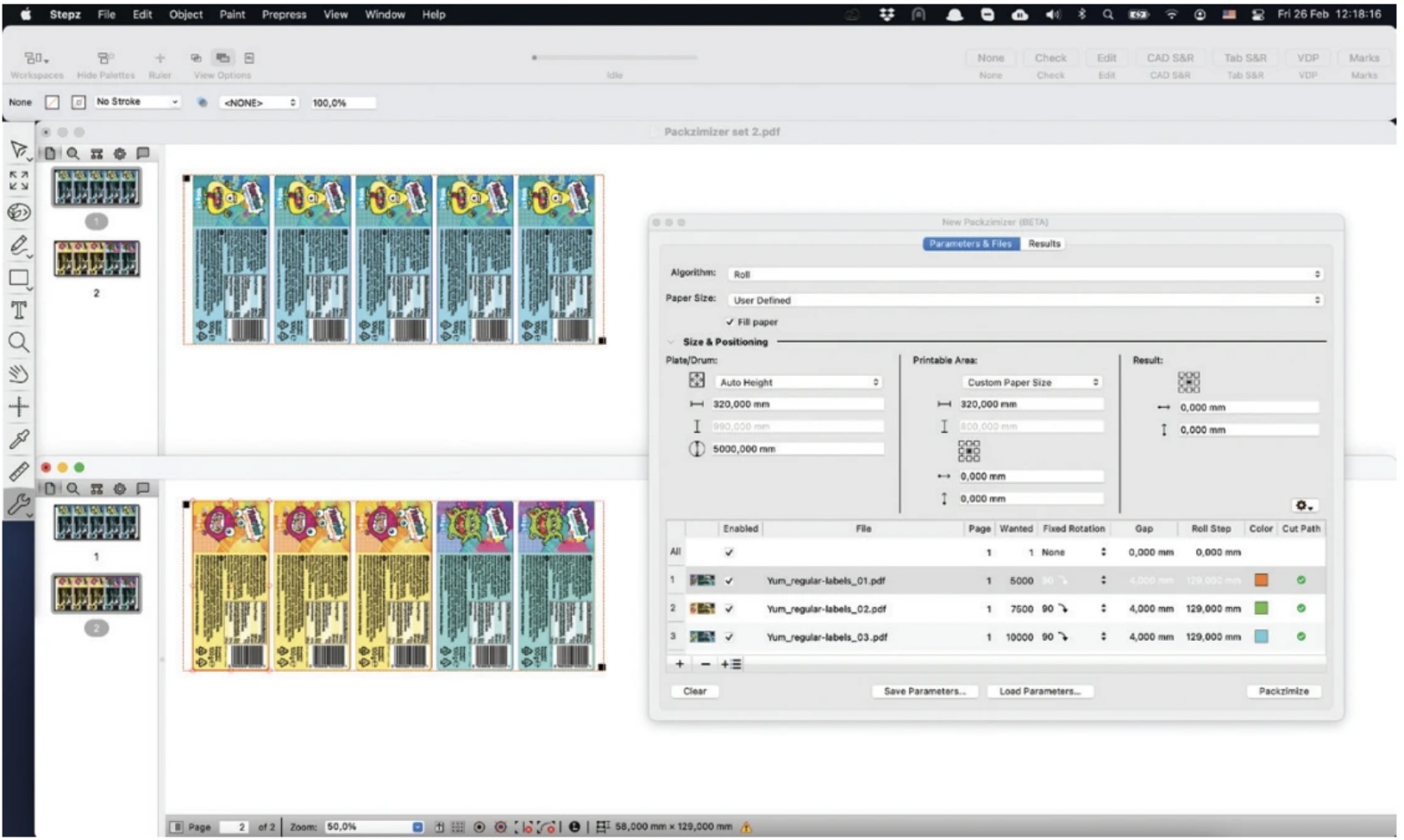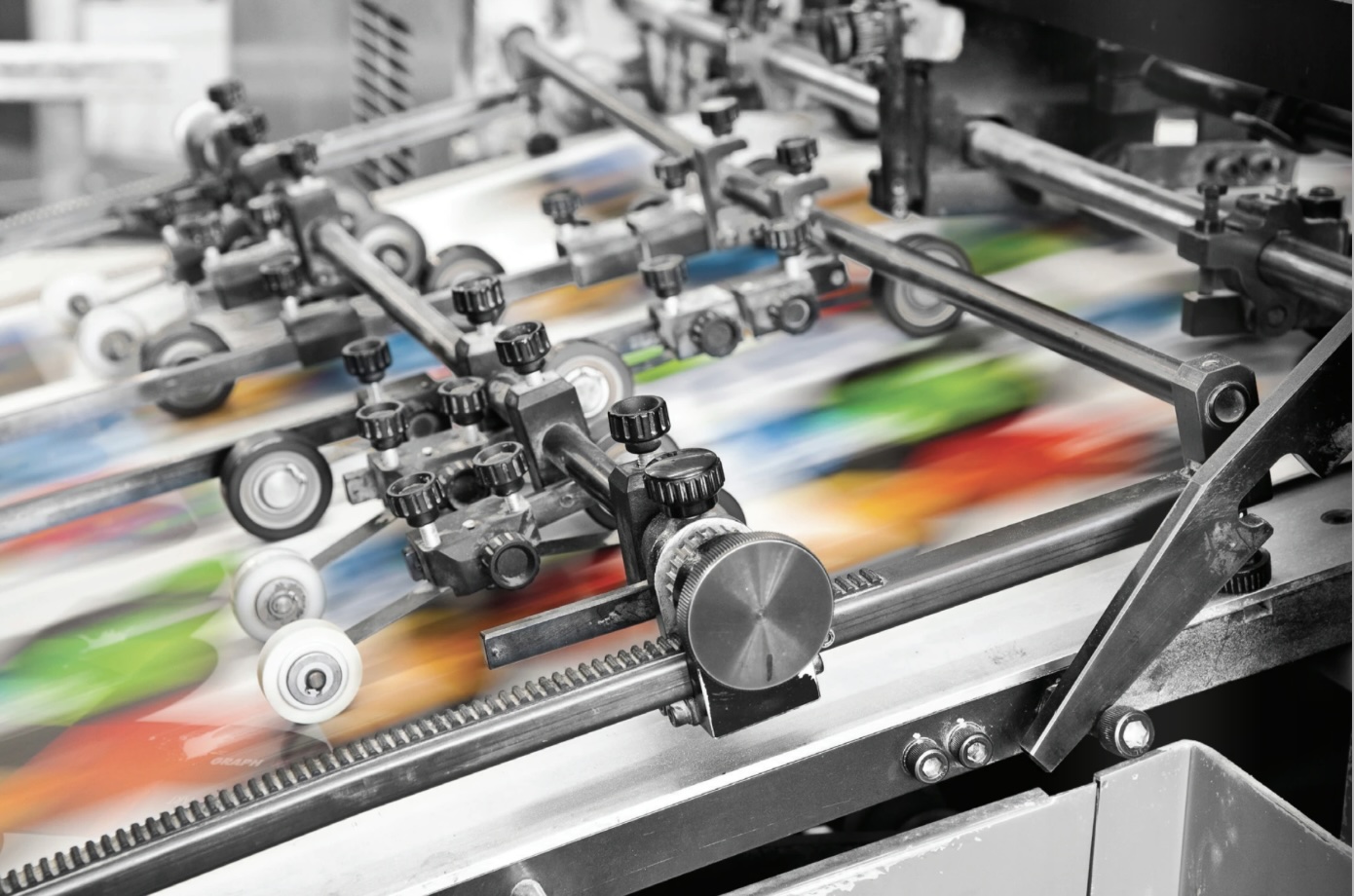Complete Production Efficiencies Make Expanded Gamut Printing Work
- Published: January 17, 2025
Job Analyzation, Correct Data Optimizes Presses
By Mike Agness, Executive Vice President, Americas, Hybrid Software
Expanded color gamut (ECG) printing for digital and conventional presses isn't new. Every digital press relies on expanded gamut printing, and many of us have been operating one for a while. Whether it's four-color, five-color, six-color or seven-color, you get greater spectral range when you add more inks to the process.
Color management must be utilized to map out brand colors, matching them as closely as possible to be acceptable and consistent on the shelves next to similar packages. While it has been adopted by many, the practice of applying maximum efficiencies has been often ignored
Analyzing Job Data for Commonality
Adapting a digital ECG workflow to conventional presses, you make the most money and efficiencies by keeping the press running with the same substrate and inks. How you best optimize the press is by analyzing jobs and getting the data right — not catering to printing specialty stock or specialty inks. Arriving to some standardization with ECG brings you closer to those efficiencies.
This requires a reliance on data to optimize efficient printing, along with planning for ECG manufacturing. Data analysis is extremely important. You're most efficient when you look at your business book — or in-house orders — and plan from complex components to optimize common material and resources.
Getting as many similar items to print across the web requires different thinking; even down to how plates are made. When adapting to ECG, avoid selling a five-color job (CMYK plus special ink) for a seven-color print process. Fit each job into a standard process — and control it! You optimize manufacturing by taking many different jobs, and driving those ECG efficiencies. In the past you might have output plates with multiple jobs. Now, it may be advisable to output 'singles' that are stepped out on a mounter for greater optimization.
What is meant by the data? It's the job specs. Look at substrates, order quantities and finishing techniques. Imagine quoting a job and gaining a 20 percent additional margin with an optimized manufacturing process utilizing those efficiencies, taking advantage of ECG as one of the components. Color conversion enables the further analysis of data for optimization of order quantity; basically, optimizing everything. You can complete more than one job at a time rather than working on one, and then moving to the next.
Imagine Neapolitan ice cream. Maybe there's not as much strawberry sold as chocolate and vanilla. You might need two-up of chocolate, three-up of vanilla, and one-up of strawberry to fit order quantities. By intelligently building your plates, you can reduce your print run lengths by optimizing across the press width.
But, data must be constantly scrutinized. For example, strawberry might sell better in the summer than the winter. So, you may need to optimize the ganging of flavors seasonally. There are many systems for planning. It's predictable when done correctly. You just need to feed the data into the algorithms — whatever you're using — to get optimized information out.
It's helpful if you can convince your clients to use common substrates, but plans must also be made for finishing and slitting, among other tasks, more efficiently. Many ECG job challenges occur during finishing.
ERP must capture order data. Ideally prepress systems will gather the data and associated files and deliver them to planning. Algorithms determine the most optimal way to print — as well as manufacturing scheduling and finishing.
The greatest cost in manufacturing occurs when you're not running, or manufacturing, anything. This happens when changing inks and washing up. A consistent ECG ink process makes it easier to squeeze in rush jobs because you're not dealing with wash-ups. You can plan to gang orders on Wednesday and print on Friday (or sooner!).
Helping Brand Owners
We help brands by being more efficient, and explaining how this can be achieved. As a converter, you must get jobs done faster so that rush jobs can fit in and be shipped.
By selecting more jobs that exactly fit the same manufacturing processes, you can analyze them, and monitor and change priorities for those that are truly urgent.
Remind brands of the challenges printing with brand inks bring. It could take a while to create the ink. Or, the package uses such an extreme amount of ink, suddenly causing a supply chain shortage of an ink component. Of course, an extremely long run will hold up other jobs. By printing with ECG, you can stock inks easier and manage them faster.
Should a brand want to improve packaging sustainability and explore ECG, it's best to migrate with a new design or product launch. It's likely everybody will rebrand in the next few years, ironically because of sustainability. The converter should remind the brand that ECG is more eco-friendly. There's less waste.
I believe that in the end, price, convenience and speed win over quality. That doesn't mean that ECG skimps on quality. All the graphics can be enhanced with a greater color spectrum. Newer screening technologies have also mitigated moiré challenges of the past.
And, if you're still mixing brand inks, you can't bet that the ink that you built today will exactly match the ink from a year ago.

How Can I Be More Efficient?
How can you plan for better ECG efficiencies?
- Standardization is key. The more similar each job is to the next, the more efficient production becomes.
- Utilize a color management system that easily and accurately matches brand colors.
- Make sure that all job data is captured in business and production systems.
- Implement an effective production system that optimally combines similar specs (colors, substrates, inks, finishing, etc.) for efficient job ganging.
- Tell the brand owner how ECG can benefit business. Discuss all of the process variables, and how they can be analyzed for optimum packaging results.
If you've moved to ECG, con-gratulations. You've probably seen measurable production results. Now, go further by ganging jobs optimally. You’ll see even greater rewards.
About the Author
Mike Agness, Hybrid Software executive vice president, Americas - and previously vice president of sales for Hybrid North America - joined Hybrid Software in 2011 after a long career at Pitman Company and Agfa Corp. He brings a strong blend of technical and sales experience to Hybrid Software and its customers. He can be reached at This email address is being protected from spambots. You need JavaScript enabled to view it..




